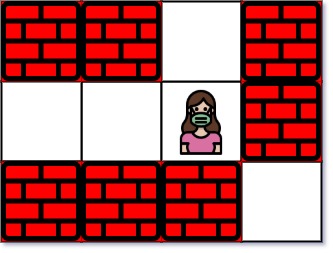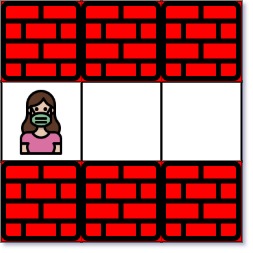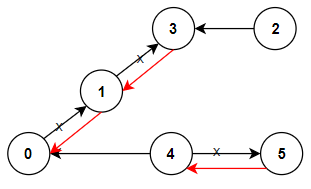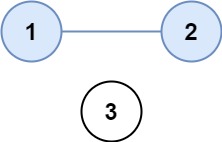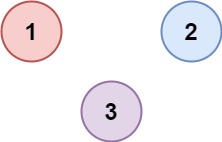Problem: There are n cities numbered from 0 to n-1. Given the array edges where edges[i] = [fromi, toi, weighti] represents a bidirectional and weighted edge between cities fromi and toi, and given the integer distanceThreshold.
Return the city with the smallest number of cities that are reachable through some path and whose distance is at most distanceThreshold, If there are multiple such cities, return the city with the greatest number.
Notice that the distance of a path connecting cities i and j is equal to the sum of the edges' weights along that path.
Example:

Input: n = 4, edges = [[0,1,3],[1,2,1],[1,3,4],[2,3,1]], distanceThreshold = 4 Output: 3 Explanation: The figure above describes the graph. The neighboring cities at a distanceThreshold = 4 for each city are: City 0 -> [City 1, City 2] City 1 -> [City 0, City 2, City 3] City 2 -> [City 0, City 1, City 3] City 3 -> [City 1, City 2] Cities 0 and 3 have 2 neighboring cities at a distanceThreshold = 4, but we have to return city 3 since it has the greatest number.

Input: n = 5, edges = [[0,1,2],[0,4,8],[1,2,3],[1,4,2],[2,3,1],[3,4,1]], distanceThreshold = 2 Output: 0 Explanation: The figure above describes the graph. The neighboring cities at a distanceThreshold = 2 for each city are: City 0 -> [City 1] City 1 -> [City 0, City 4] City 2 -> [City 3, City 4] City 3 -> [City 2, City 4] City 4 -> [City 1, City 2, City 3] The city 0 has 1 neighboring city at a distanceThreshold = 2.
Constraints:
- 2 <= n <= 100
- 1 <= edges.length <= n * (n - 1) / 2
- edges[i].length == 3
- 0 <= fromi < toi < n
- 1 <= weighti, distanceThreshold <= 10^4
- All pairs (fromi, toi) are distinct.
Approach: This is clearly a Floyd-Warshall problem as we can do BFS here but the complexity will be n^n. Once we get the dist matrix from Floy Warshall algorithm, things becomes simpler. Now we know that we have the shortest path matrix 'dist' with us so we just need to traverse this matrix:
- For every node i from 0...n-1:
- Check if dist[i][j] <= distanceThreshold then we know j is reachable from i.
Now in this way we just need to calculate the number of cities reachable from every city i and return the city with minimum number of connected cities.
Implementation in C#:
Complexity: O(n^3)

